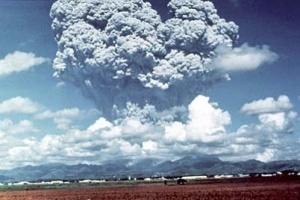New study reveals economic pressures during 2010 ash cloud

A new analysis of the volcanic ash crisis in 2010 which led to the closure of Europe’s airspace for six days and huge financial losses for airlines reveals how powerful economic interests can shape regulation.
It explores how, before the crisis, the airline industry failed to respond to regulators’ calls to discuss modifications to standards and protocols.
Then, during the crisis, commercial pressures forced the modification of internationally agreed safety guidelines in a matter of days.
The research from the London School of Economics and Political Science was based on interviews with staff at senior policy level within the Civil Aviation Authority, the Met Office, the Irish Aviation Authority and two airlines, as well as internal documents provided by the CAA.
These demonstrated how the pressure to ‘open the skies’ during a peak holiday period to enable the repatriation of ten million stranded passengers amid mounting costs forced a rethink in the balance between safety and cost.
International guidance on ash and aviation had been considered unnecessarily cautious for some years but there had been resistance to change, partly because engine manufacturers had economic interests in optimising the life of their engines.
The report, by Professor Bridget Hutter and Professor Sally Lloyd-Bostock of LSE’s department of sociology, concludes: “The central justification of regulation is that it controls undesirable risk.
“Regulators are burdened with managing these demands while allowing business to continue.
“They are blamed when things go wrong, especially if there is loss of life. In the present case had there been a fatal plane crash, the ‘crisis’ would undoubtedly have taken a very different shape.
“In its absence the CAA were vulnerable to blame for being too cautious.”
The report, published in the latest edition of the British Journal of Sociology, explains that the potential danger to aircraft from flying through volcanic ash was well recognised worldwide.
Nine global Volcanic Ash Advisory Centres, including one in London, were established following serious ash incidents in the 1980s.
One of the best known occurred in 1982 when a British Airways Boeing 747/200, with four Rolls-Royce RB-211 jet engines entered a volcanic ash cloud from the erupting Indonesian volcano Gulunggung.
Within a few minutes, all four engines failed.
In a second incident in 1989, KLM Flight 867 was caught in an ash plume from Mount Redoubt.
Fortunately neither incident ended in disaster.
After descending several thousand feet, the pilots of both aircraft were able to recover sufficient engine power to land safely.
Most of the contingency plan for the 2010 crisis came out of an eruption of another Icelandic volcano in 2003-4 which affected Scandinavia and areas of Eastern Europe.
Guidance was to avoid any amount of ash due to the lack of agreed values of ash concentration which constitute a hazard to jet aircraft engines.
The guidelines had caused few problems where ash clouds were relatively short lived and where aircraft could divert around them comparatively easily.
In 2010, unusual wind direction and a settled weather pattern meant that the ash cloud was predicted to linger over some of the most congested airspace in the world.
Analysis of media coverage showed how the initial focus was on the risks to aircraft safety, but soon the travel industry dominated the public narrative as the large airlines such as BA and Virgin became increasingly vociferous opponents of the no-fly zone.
The research says: “There is little doubt that some of the airlines, especially the larger ones, started to use the media to echo their concerns.”
The report adds: “In media reporting of the crisis the fact that the regulators were constrained by internationally agreed rules was lost.”
Instead, the CAA, the Met Office and National Air Traffic Services became the targets of blame.
The report explains: “Groups interested in re-opening the skies – notably the airlines – managed the public narrative so successfully through the media that the regulators became widely cast as the fall-guys for following internationally accepted protocols. Regulators became scapegoats, arguably obfuscating deeper problems regarding the fragility and vulnerabilities of aeromobility.”
The report explains that, behind the scenes, the engine manufacturers were key to the resolution of the crisis because only they could determine what level of ash their products can safely tolerate.
They took several days to agree to a change in the protocol.
The report adds: “Through complex negotiations, new threshold concentrations were agreed, and there was a shift away from zero tolerance to graded zones of volcanic ash.
“Some observers regarded this as a fundamental paradigm shift from one that centred passenger safety to one that privileged protecting the airlines from disruption.”
It concludes: “The case illustrates how risk anticipation and interpretation are as much social processes as scientific ones.
“The event exposed different interests at play in civil aviation risk regulation, and a crisis that threatened the financial viability of the industry became constructed as a regulatory crisis
“Our analysis has shown how society’s expectations of the anticipation and control of risks are tempered by economic interests.
“The ash case illuminates the web of interest groups involved in shaping regulatory responses to regulatory dilemmas.”

